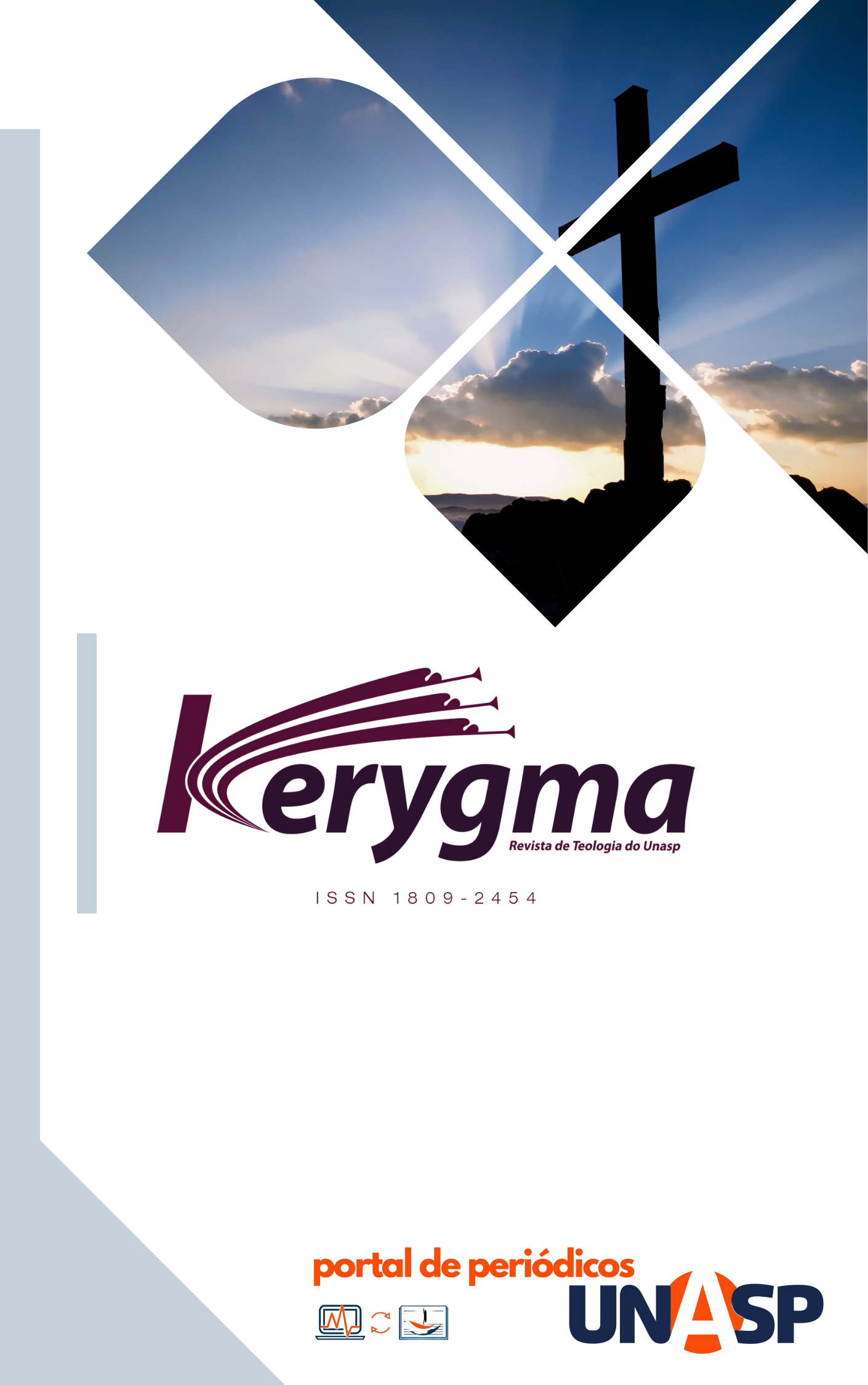Abstract
Since the 19th century the theme of dinosaurs has recurrently appeared in the Seventh-day Adventist Church literature. With the constant discoveries of fossils of these animals, many Adventist scholars sought to reconcile the biblical account of the world creation and the coexistence of these beings (since they are commonly used in scientific circles as evidence for the theory of evolution). The purpose of this article is to investigate the Adventist perception on the subject, from the beginnings of the church history to the early 21th century, analyzing the course of the discussions and the influences involved. To carry out this work, the method of bibliographic analysis was used. Among the main authors researched are Ellen G. White, George M. Price, James L. Hayward, Samuel P. Tregelles, and Francis H. Nichol. The research concludes that the church does not have an assertive position on the subject, and both alternative explanations for the origin of dinosaurs – by divine creation or by amalgamation – are clear and understandable within their respective hermeneutical contexts.
References
AUSTIN, H. O. Footprints of the past. Youth’s Instructor, v. 103, n. 25, p. 3-4, 18, jun. 1955.
BAKER, A. L. Why attack evolution? An open letter. Signs of the Times, v. 52, n. 46, p. 11, jan. 1925.
BENTON, M. J. The history of life: a very short introduction. Oxford: Oxford University Press, 2008.
CAMBRIDGE. International dictionary of English. Cambridge: Cambridge University Press, 1995.
CLARK, H. W. The Earth speaks to the evolutionists. Signs of the Times, v. 71, n. 30, p. 9, ago. 1925.
CLAUSEN, B. L. Pode a ciência explicar tudo? Diálogo Universitário, v. 3, n. 2, p. 8-10, 1991.
CORREIA, R. F. Drama of the disappearing dinosaurs. Ministry Magazine, v. 51, n. 4, p. 28-32, abr. 1978.
DOUGLASS, H. Mensageira do Senhor: o ministério profético de Ellen G. White. Tatuí, SP: Casa Publicadora Brasileira, 2001.
DURAND, E. F. Dinosaurs dilemma. Adventist Review, v. 162, n. 36, p. 2, 13, ago. 1985.
ESPERANTO, R. Achaeopteryx: um réptil voador. Diálogo Universitário, v. 17, n. 1, p. 32-33, 2005.
ESPERANTO, R. What does the Bible say about dinosaurs? Ministry Magazine, v. 81, n. 12, p. 6-10, dez. 2009.
GEOSCIENCE, Research Institute. Major objections to Creation and how we answer them. Ministry Magazine, v. 57, n. 5, p. 18-23, mai. 1984.
GIBBS, P. T. Mike. Youth’s Instructor, v. 117, n. 40, p. 15-16, out. 1969.
GOLDSTEIN, C. Cliff’s edge-choose your farfetchedness. Adventist Review, jun. 2018.
HAYWARD, J. L. Dinosaurs. Adventist Review, v. 170, n. 32, p. 12-15, ago. 1993.
HOENES, G. Dino and other saurs. Adventist Review, v. 170, n. 41, out. 1993.
HOLLADAY, W. L. Léxico hebraico e aramaico do Antigo Testamento. São Paulo: Vida Nova, 2010.
KENNDEY, E. G. Os intrigantes dinossauros. Diálogo Universitário, v. 5, n. 2, p. 9-11, 34, 1993.
KENNDEY, E. G. Perguntas e respostas sobre os dinossauros. Diálogo Universitário, v. 18, n. 3, p. 9-12, 2006.
LIDDEL, H. G.; SCOTT, R. A Greek-English lexicon. 8. ed. Oxford: Oxford University Press, 1897.
LITTLEJOHN, W. H. Antediluvian Monsters. Review and Herald, v. 51, n. 2-4, p. 192, jun. 1878.
MELEEN, A. Alice in Wonderland. Youth’s Instructor, v. 89, n. 7, p. 5, fev. 1941.
NICHOL, F. D. Restudying the doctrines. Ministry Magazine, v. 13, n°.3, p. 35-37, mar. 1940.
NICHOL, F. D. Why attack evolution? An open letter. Adventist Review, v. 140, n. 6, p. 11, fev. 1966.
NICHOL, F. D. (Ed.). Comentário bíblico adventista. Tatuí, SP: Casa Publicadora Brasileira, 2012.
NICHOL, F. D. Ellen White e seus críticos. Tatuí, SP: Casa Publicadora Brasileira, 2020.
PADIAN, K. The problem of dinosaurs origins: integrating three approaches to the rise of Dinosauria. Earth and Environmental Science Transactions of the Royal Society of Edinburgh, v. 103, n. 3-4, p. 423-442, set. 2013.
POPE, M. H. Job: introduction, translation and note. 3. ed. Garden City: Doubleday & Company, 1982.
POPPER, K. The logic of scientific discovery. Londres: Routledge Classics, 1968.
PRICE, G. M. Preserved from diluvian. Signs of the Times. v. 45, n. 45, p. 2, nov. 1918.
PRICE, G. M. Counsel corner. Youth’s Instructor, v. 81, n. 28, p. 14, jul. 1933.
PRICE, G. M. The small beginnings of the evolution theory. Ministry Magazine, v. 7, n. 8, p. 16-17, ago. 1934.
PRICE, G. M. Bones, bones. Signs of the Times, v. 62, n. 2, p. 5, jan. 1935.
PRICE, G. M. Your Bible questions answered. Signs of the Times, v. 79, n. 7, p. 2, fev. 1952.
SERENO, P. C. The evolution of dinosaurs. Science. v. 284, n. 5.423, p. 2137-2147, jun. 1999.
SHEA, W. H. O dilúvio: apenas uma catástrofe local? Diálogo Universitário, v. 9, n. 1, p. 10-13, 1997.
SPECHT, W. F. Prehistoric monsters and the flood. Youth’s Instructor, v. 83, n. 37, p. 4, set. 1935.
SPEISER, E. A. Genesis: introduction, translation, and notes. Graden City: Doubleday & Company, 1964.
TREGELLES, S. P. Hebrew and Chaldee lexicon. Grand Rapids: Eerdmans, 1964.
UTT, R. H. When dinosaurs roamed the earth. Signs of the Times, v. 88, n. 2, p. 20, fev. 1961.
WEHMEIER, S. Oxford advanced learner’s dictionary. 6. ed. Oxford: Oxford University Press, 2000.
WEISHAMPEL, D. B.; DODSON, P.; OSMÓLSKA, H. The dinosauria. Oxford: University of California Press, 1990.
WHEELER, R.; COFFIN, H. G. Os dinossauros. Tatuí, SP: Casa Publicadora Brasileira, 2005.
WHITE, E. G. Spiritual gifts, volume III. Washington, DC: Review and Herald, 1945.
WHITE, E. G. Vidas que falam: meditações matinais 1971. Tatuí, SP: Casa Publicadora Brasileira, 1971.
WHITE, E. G. Educação. Tatuí, SP: Casa Publicadora Brasileira, 1997.
WIDMER, O. Kris. Dino and other saurs. Adventist Review, v. 170, n. 41, out. 1993.
WOOD, K. H. Specially priced during the international Year of the Child. Adventist Review, v. 156, n. 37, 1979.

This work is licensed under a Creative Commons Attribution 4.0 International License.
Copyright (c) 2022 Davi Vieira de Amorim, Renato Stencel


